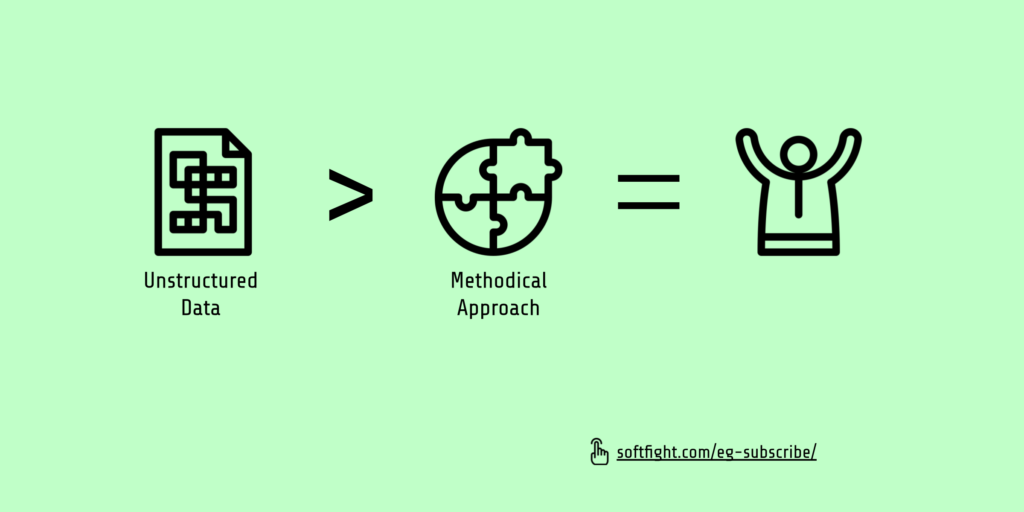For many (or most) in the software services industry, pricing means one thing and one thing only: setting the hourly rate.
This is not only wrong, it’s counterproductive and damaging to their business.
Here’s why.

How much will we charge? This is what most people in this industry think of whenever I ask them about pricing or price management.
A lot of times, their answers are something like this: “we calculate the salaries and other costs, add a margin and that’s our rate card”.
Unfortunately for them, pricing is a lot more complicated.
Fortunately for you, it’s not really rocket science.
The activity of setting your rate should not represent more than 5% of the time you spend on optimizing your pricing.
If you spent 5 hours this year thinking about pricing (=setting your rates), it doesn’t mean you should spend less next year. It means you have to spend a lot more, just on different things.
Regardless of company size or types of services offered, pricing is about making decisions and taking actions in 4 separate phases:
- Strategic choices
- Calculation
- Communication
- Negotiation
Strategic choices
The price you are going to ask from a potential customer or the rates you are trying to re-negotiate with an existing customer depend a lot on the business objectives you have set for the company.
There is a big difference between wanting to achieve a doubling of revenues in the next 12 months or getting to 95% billability rate. The strategic business objectives will (and should) drive a lot of the pricing decisions you make.
Segmentation. Who are you selling to? Who are your ideal customers? For which type of company, industry or specific customer needs are your services optimized for?
The way you define your customer segments has an impact on your pricing model.
The segments that you choose to work with have an impact on your pricing model.
The competitive positioning you choose for those segments has an impact on your pricing model. Do you want to be the cheapest? Do you prefer not to compete on price, but on features or service quality? Do you want to be perceived as a premium vendor?
Quality delivered. There are tens, if not hundreds of attributes, variables and measures that can be used to assess objective quality delivered in software services.
What level of quality do you choose to offer?
Can your team actually deliver it? Is what you are selling the same as the quality you deliver?
Is it aligned with what your customers want and need?
Calculation
After you have answered all those questions, you can think about calculating your prices.
But wait. There is at least another important step. What is your pricing model? Which metrics are you going to use?
Hourly rate. Daily rate. Weekly rate. Per sprint of 2 weeks. Monthly retainer.
Price per activity. Fixed price for a fixed scope.
Different rates based on seniority. Different rates based on technology stack. Different rates based on other objective factors.
Performance-based. Pain share, gain share.
Discounting rules: do you charge less for long-term contracts? Or if the project team is bigger? Or if you like the client and the challenges in the project?
If you made these choices, you are now ready to calculate:
- Your standard rate card
- Project prices for potential clients
When you are only adding a margin on top of salaries and costs, you might as well give the keys of your business to the customers. They can also do this calculation and decide what the prices should be.
For the rate card, there are 3 sources of data to use:
- Costs (of course)
- Competition
- and Customers. What is the value they get from you? Can you quantify it? How much are they willing to pay? How much can they pay? Are there any attributes that they value more than others? Ideally, you should have different answers for each customer segment. If the answers are similar, they are not different segments.
You also need to decide how often you will recalculate the standard rates. Quarterly? Yearly? Every time salaries increase? When you read about inflation in the press? After 5 years? Never?
From your rate card you can build a pricing calculator for each new project.
Ideally, this is a dynamic pricing calculator, to take into account as many variables as possible for each new prospect.
Customers’ needs are different.
The quality each customer gets varies.
Prices they pay should also vary.
Communication
You have a standard rate card.
Do you publish it on the website, as some companies in the industry do?
If it’s not on the website, do you send it by email to anyone asking for it?
Do you share it by default after the discovery call? Or only if the potential client asks about it?
Do you include your entire rate card in any project proposal that you create?
When you update your standard rates, do you inform your existing clients as well?
Do team members know the standard rates you are charging? Do they know the rates on the project they are working on?
Quick side-note here, as I can almost feel your indignation:
- If your team members don’t know the rates, you are thinking – why would I make this information available to them? I am not going to undermine my entire business model.
- If your team members know the rates, you are thinking – why would anyone not share this information with the team?
End of side-note.
When you communicate the price for one potential customer:
- Do you tell them the discount applied from the beginning?
- How many options do you offer them? 1? 2? More?
- How many details do you include about the payment terms, future rate increases, what happens if team members are changed from the project and all other possible financial implications of actions that you control?
- Is there any planned sequencing in the sales process? Do you give the price at the same time with the project plan proposal?
Negotiation
How flexible is your offer for each client?
Does the outcome depend on the negotiation skills of the team member talking to the prospective client?
Do you have a negotiation plan prepared?
Once the project starts, the negotiation doesn’t stop. On the contrary. Whenever you will have to re-negotiate a contract extension or a rate increase for a long term contract, the quality delivered (both objective and perceived) will play an important role in the discussions.
WHAT THIS MEANS FOR YOU
Whether you want to
- increase profit margins
- increase revenues
- increase your growth rate or market share
there is a very high chance that thinking more about pricing and price management will give you some of the answers and solutions you need.

